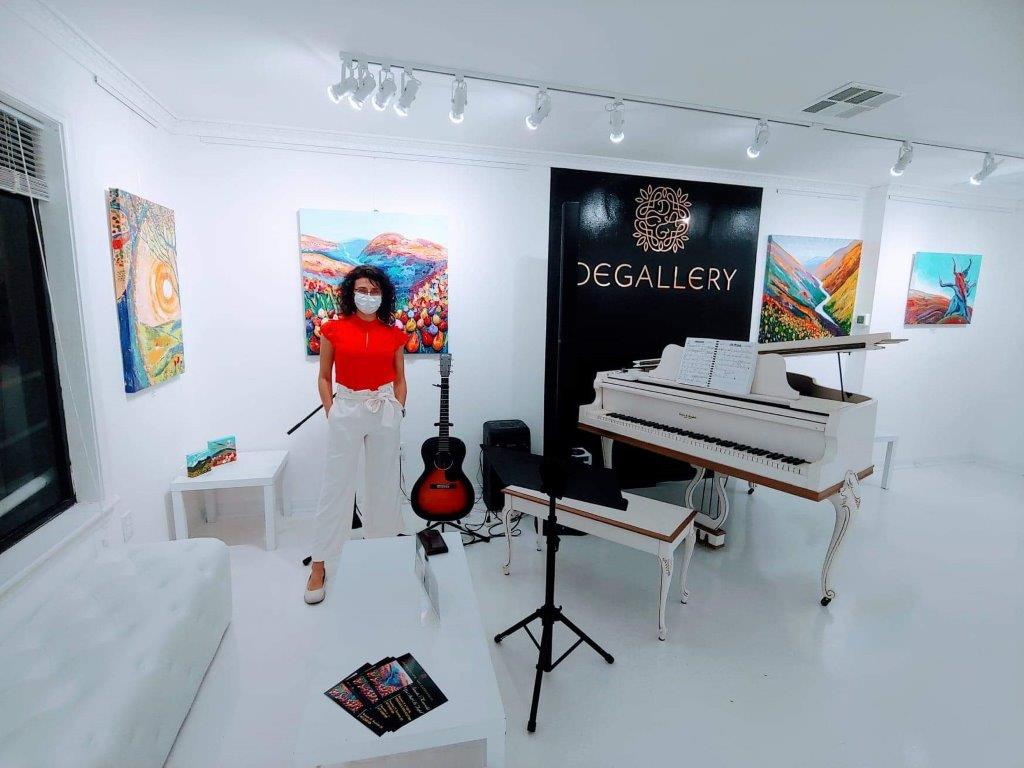
– Natasha, what projects are you currently working on?
What can an artist do? Create new paintings. Right now, I am preparing for an upcoming Art Show at Degallery, the Art Gallery that represents me. I am developing ideas for the next personal exhibition, create works for online galleries and my online stores – they all require daily or at least weekly replenishment. In January, I’ve started a series of artworks “The nose” that raises the problem of anti-Semitism, which has already received a response of the contemporary art market: one painting has been accepted for the “2021 Women in Art” exhibit at Las Laguna Art Gallery, Los Angeles; and another one – for the “Let’s Talk” show at the Downtown Gallery in Round Rock, TX. To say I’m surprised is to say nothing. I think this is an amazing achievement for such a heavy topic as anti-Semitism, and I am very happy to bring it up. It is astonishing that someone in America is interested in it, and not just someone, but the curators of two completely different exhibition spaces. Contemporary art is intellectual and it should raise social problems. Now I am finally convinced of this, already by my own example. It is not enough just to create beautiful paintings, you need to work with meaning so that your paintings would have the right to be called Art.
– Please tell us about your life in America. Where did you study and worked in the past?
I was born and raised and even graduated from University in Belarus. In the 90s, it was out of the question to get a profession that could not provide an opportunity to earn money (I know the situation from the inside, my mom is an artist). Since I have a broad spectrum of skills, so to say, I became an Economist and built a pretty good carrier back in Israel. I emigrated to Israel in 1999, by the way, completely alone.
After I’ve moved to Texas, I’ve decided to pursue my lifelong passion for art and shifted my focus to painting full-time. Midlife crisis? Never heard about it!
Building an art business from scratch and running it in the right way fascinates me no less than mastering new techniques and materials, being in the creative process of self-expression in paintings, in attempts to understand myself within the framework of contemporary art.
The first online store – on Etsy – was opened a little over a year ago. I was able to make it successful. I have returning customers who leave touching reviews.
In 2020, I pushed myself out of the comfort zone by participating in Art fairs, where I met wonderful people who led me to meet Dary Dega, the owner of Degallery (Art Gallery in College Station). She invited me to participate in the Art Show “Glass Matters” in the spring of 2020, and in November, she organized my first Solo Exhibition. I am happy to be represented by Degallery and bring new paintings there every month. Thanks to Dary’s support (emotional, informational and professional), I feel ready to apply to Juried Exhibitions, from local to national.
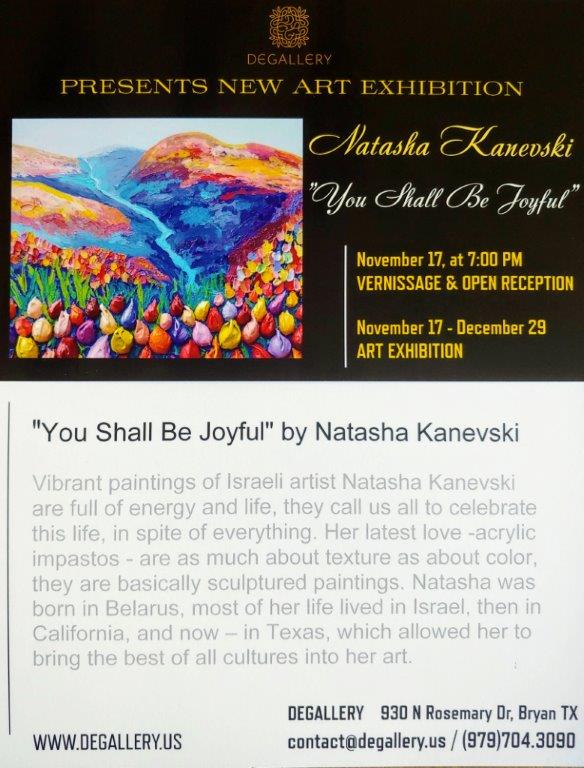
– Was coming to Austin your choice or more of a coincidence?
We lived happily in California, in San Diego, and had never heard of Austin until I read an article declaring Austin as the best city in the country in terms of cost of living for high-tech workers. One of the company’s offices my husband dreamed of working for, back in Israel, had just opened an office in Austin, and they had a vacant position he was interested in. Dima went to an interview, and, since he is talented and experienced, of course, he was immediately hired.
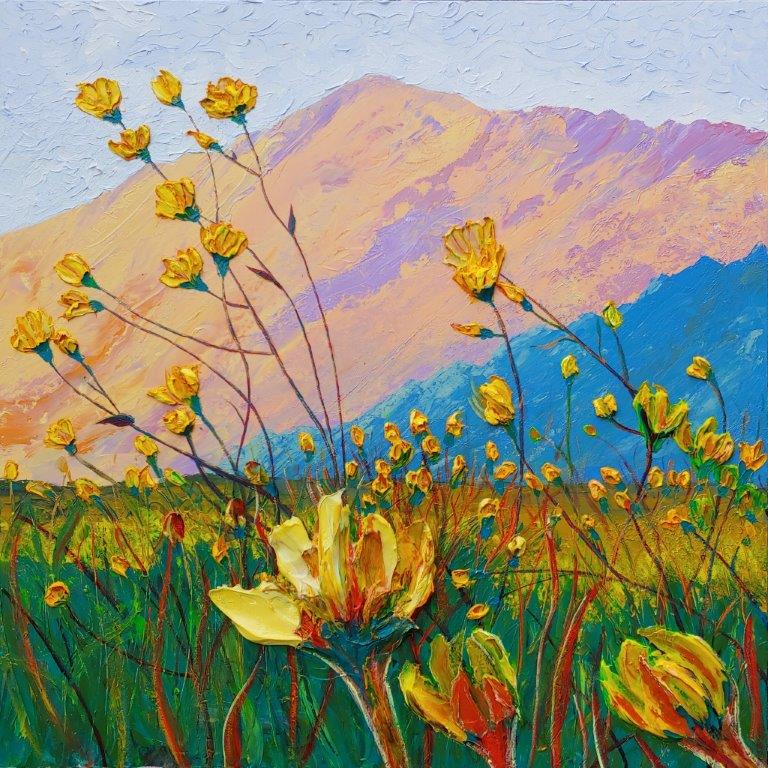
– What do you like most about Austin?
I don’t have an opinion yet – the pandemic came too soon after our arrival.
– Please describe your profession, your art projects, and your work.
I create heavy-textured or sculptured expressionistic paintings. I want to get out of the canvas, but not tear myself away from it, going ultimately into the sculpture.
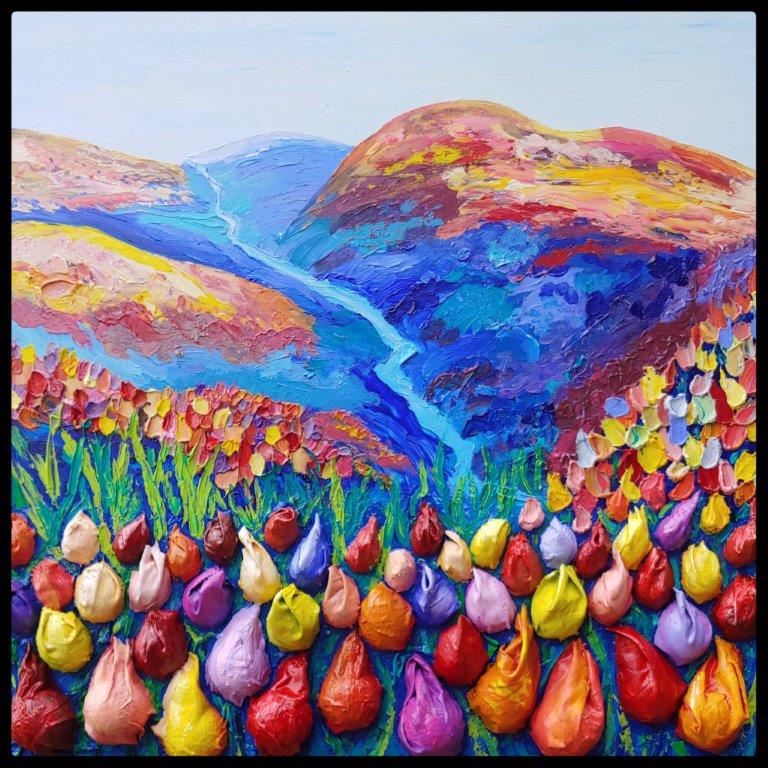
I’m researching the form. The material I use when creating the 3D object tells me what shape the artwork should take. I like to show the object in a contrasting texture. For example, a delicate weightless flower’s petals are depicted in my artworks as voluminous and massive, rough, simplified. Such a painting communicates the fragility of life itself rather than describing the appearance of a particular flower. It is not the flower that is conceptualized, but what we like in its fragility.
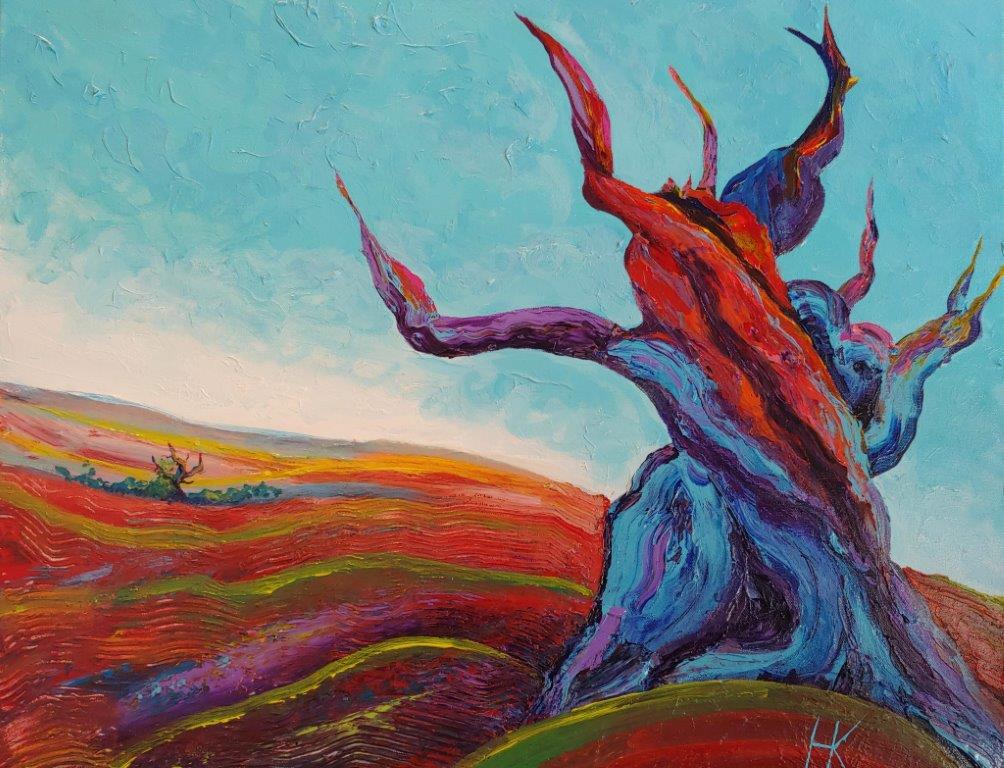
I need to excite a person’s consciousness and start a dialogue with her/him, showing the power of simplification, by which I am trying to explain this world. The point is, we all, especially emigrants, look at life in a quite polar way; we select from the environment some specific objects and phenomena that are significant for us only. Sometimes we do that intentionally, or we cannot do otherwise. We all (#covid19) have a vital need to focus on what, like a crutch, helps move to the moment here and now, closing our eyes to our life situation. As a result, reality distorts, simplified to two sentences, looks clumsy, somewhat rough, and even vulgar.
This selectivity of attention (mine and others – I am not alone), the way it inevitably distorts reality, sticking out, and greatly exaggerating specific details is my work’s theme and idea.
Where did this come from? As a person who made two emigrations in adulthood, who has seen and experienced a lot, including wars, I prefer to focus on beauty only in this world, diligently closing my eyes to everything else. I think this is very typical for emigrants.
– Which of your projects were most memorable? Why?
Of course, the first solo exhibition. It became a kind of “coming out of the closet” event, recognizing me (in my own eyes, first of all) as a professional artist.
The latest project is always the favorite. “The Nose” is the series of artworks that raises the problem of everyday anti-Semitism (and sexism) in the life of a regular Jewish girl in the post-Soviet countries. Specifically, the paintings communicate a teenage girl’s feelings about the everyday anti-Semitism against her. The anti-Semitism might not really be there, but so she feels.

We don’t talk about that in our society. I’ve been there. I grew up to suspect everyone of anti-Semitism. If I haven’t heard those phrases like “Men, this Jewish chick is so hot”, or much, much worse, I’d heard them in my mind. I believed anyone around me (except Jews like me) is not free from anti-Semitism, even close friends or boyfriends, even highly educated intellectuals. I thought anti-Semitism is hidden deep inside absolutely everyone. I was convinced anything can change this, not on my timeline. It’s a tragedy for a teenager to live in a society that bullies you or to think so. You cannot afford to be close to anyone. Can you imagine how does that feel? I was minimalized by Belorussian society (to be more precise, my reflection of this society) to what you see in those self-portraits: a huge Jewish nose and quite sexy body. Youthful maximalism, you say? Of course!!! Would you like your daughter to feel like I was? You don’t, don’t you?
Why am I talking about teenage girls only? Over the years, you learn things about yourself and society. Of course, not everyone is anti-Semitic. People rarely think about Jews at all. I wish I knew that when I was just a girl. But there are teenagers out there who might live in the same hell as I was.
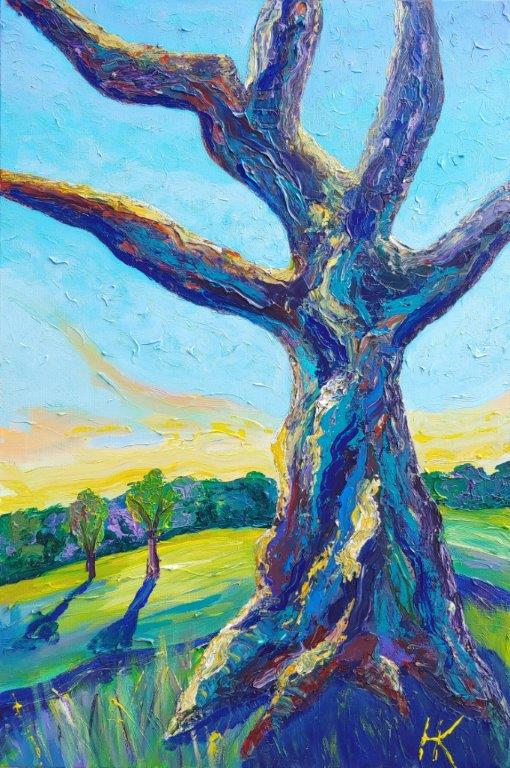
– Do you participate in any professional groups?
Oh, I’m just at the beginning of my journey as a professional artist, not all at once.
– How would you describe your relationship with the homeland?
I have a problematic relationship with my homeland, as you could’ve guessed form what I said before. But I miss my parents, who still live in Belarus. I spent almost all of my adult life in Israel, and it is Israel that I consider my country.
– What pre-Texas traditions and habits did you keep?
All traditions and habits are pre-Texas
– Please tell us about your family
My husband, Dima, is a Product and Test Manager. We met on the plane on the way to Israel. Two kids.
– What are your hobbies and interests outside of work?
I managed to turn my hobby into my job.
– Do you participate in Russian-speaking community of Austin?
We actively communicate with Russian-speaking Austinites, participate in the life of the Belarusian community.
– Which events were most exciting and memorable?
Slavic Mardi Gras (this is where I got in touch with Art Gallery Degallery) and the first picket of Austin Belarusians near the Capitol.
– What are your favorite books?
“The Power of Now” by Eckhart Tolle
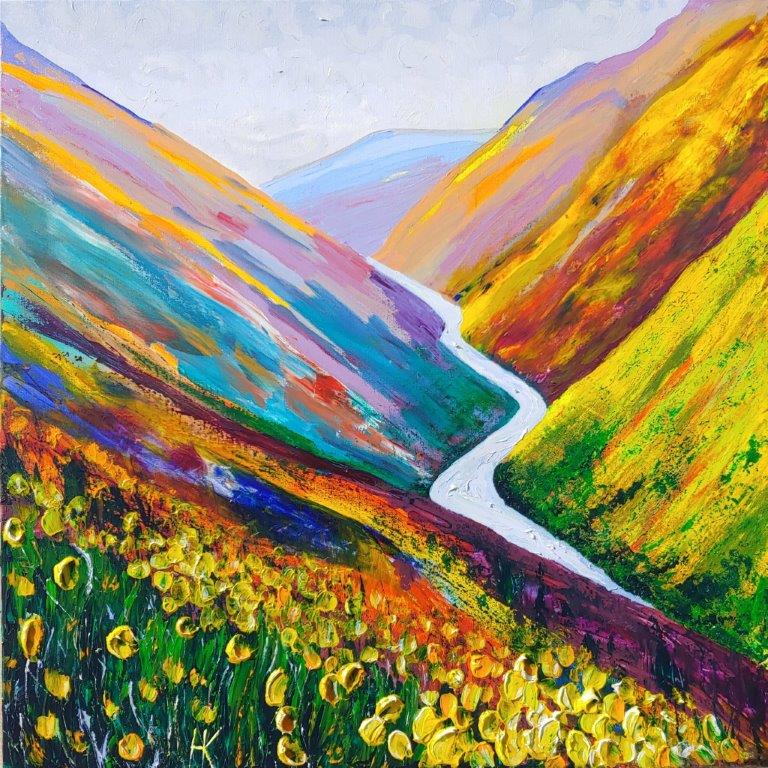
– Do you think Austin needs a Russian Cultural Center? If yes, how would you like to participate?
I see in many people the need for such a center. I can offer to exhibit my artworks.
– What would you like to wish to a russian-speaking community in Austin and Texas?
To finally see each other not online only but in real life (offline) #covid19
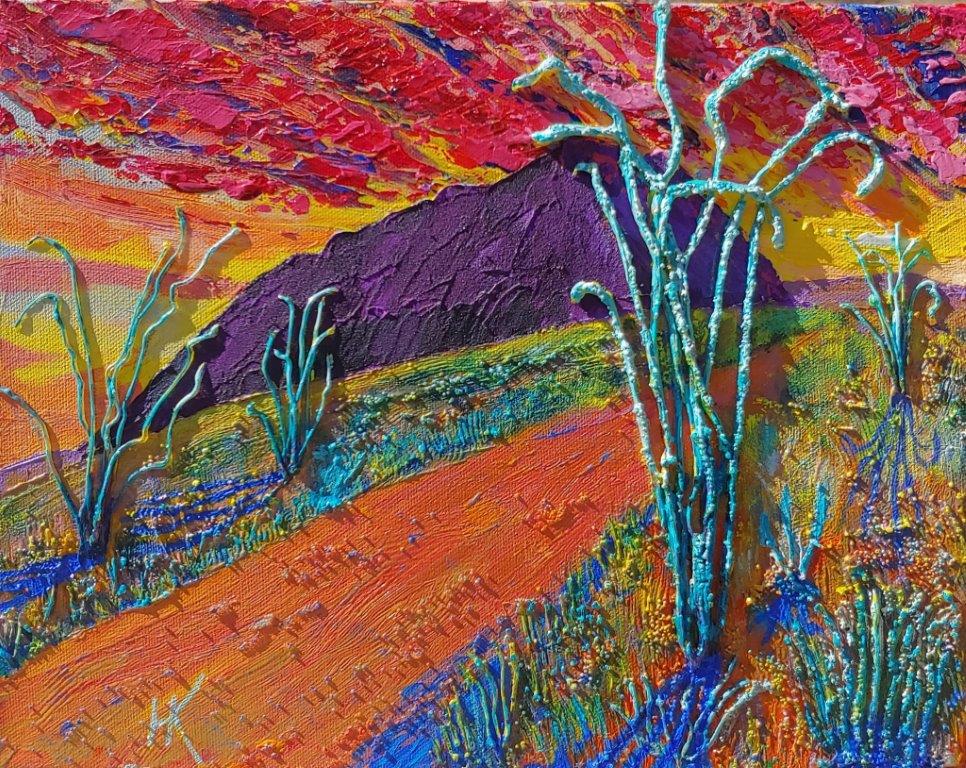
Contact information:
Etsy: etsy.com/shop/ArtByNatashaKanevski
Instagram: instagram.com/art.by.natasha.kanevski
Facebook: facebook.com/ArtByNatashaKanevski
E-mail: art.by.natasha.kanevski@gmail.com
